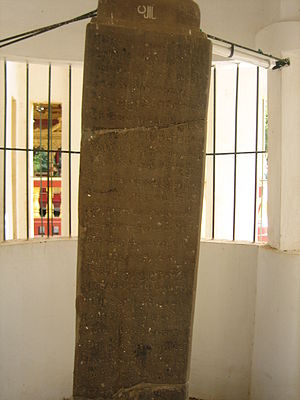Pyu (script)
| Pyu | ||
|---|---|---|
| Font | Abugida | |
| languages | Pyu (language) | |
| ancestry |
Protosinaite script → Phoenician script → Aramaic script → Brāhmī → Kadamba (script) ? → Pyu |
|
| Unicode block | None | |

|
||

The Pyu script is a writing system that was used to write the Pyu language , an extinct Sino-Tibetan language that was mainly spoken in what is now central Burma . It was based on the Brahmi- based scriptures of both North and South India. The best evidence available suggests that the Pyu script developed gradually between the 2nd and 6th centuries AD. The immediate ancestor of the Pyu script appears to be the Kadamba script of southwest India. In the early period, the Pyu inscriptions always contained interlinear Brahmi scriptures. It was not until the 7th and 8th centuries that Sri Ksetra's inscriptions all appeared in the Pyu script, without interlinear Brahmi.
Many of the important inscriptions were written in Sanskrit and Pali alongside the Pyu script. The Pyu sites have a wide variety of Indian writings from King Ashoka 's edicts written in North Indian Brahmi and Tamil Sangam literature , both from the 3rd and 2nd centuries BC. BC, the Gupta script and the Kannada script from the 4th to 6th centuries AD.
The Pyu font is not currently available in Unicode . Its inclusion was proposed in 2010 and has a provisional place on the roadmap of the Unicode Consortium.
literature
- Michael Aung-Thwin: The mists of Rāmañña: The Legend that was Lower Burma. University of Hawai'i Press, Honolulu 2005, ISBN 978-0-8248-2886-8
- GE Harvey: History of Burma: From the Earliest Times to 10 March 1824. Frank Cass & Co. Ltd., London 1925.
Web links
Individual evidence
- ^ Anshuman Pandey: Preliminary Code Chart and Names List for the Pyu Script . Unicode Consortium. August 5, 2010. Retrieved January 16, 2016.
- ↑ Roadmap to the SMP . August 17, 2015. Retrieved January 16, 2016.
